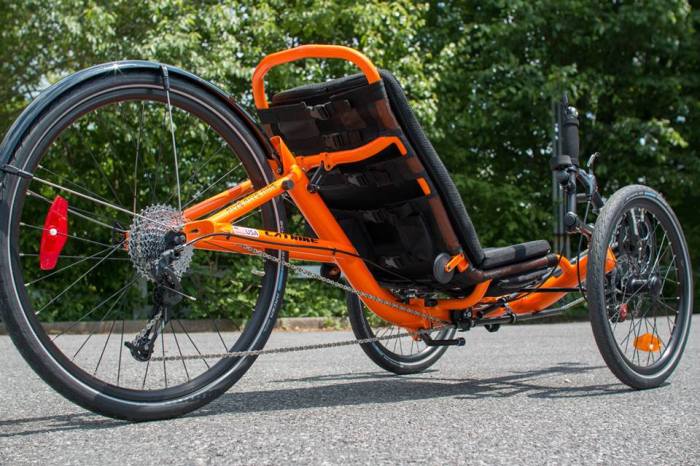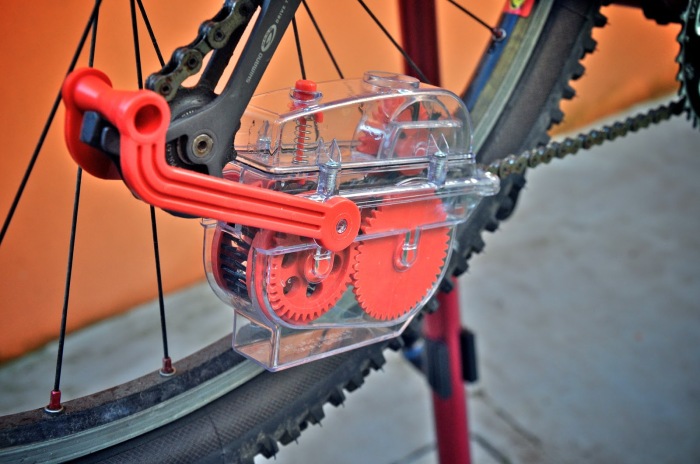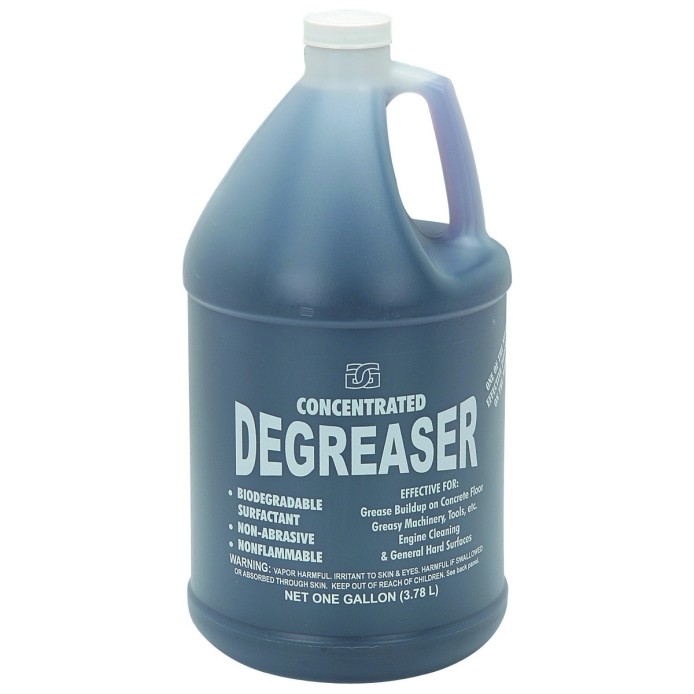note: the following is an article from my original tadpole rider blog
Most recumbent tires are high pressure tires … up around 70 to 100 psi. If you don’t have an air compressor at home or in your motor vehicle I strongly recommend purchasing a floor type bicycle air pump … one designed to pump high pressure … preferably 120 to 160 psi. That way when you pump up a 100 psi tire you aren’t maxxing out the pump to accomplish it … or maxxing yourself out using it. 🙂
In fact, I suggest getting one of these pumps even if you do have an air compressor available to use as they are quite handy and practical. I have a couple of air compressors, but I find the floor pump to be a God-send.
Most good quality pumps nowadays have a built in gauge making it very handy. I suggest checking the accuracy of the gauge initially and from time to time to be sure you are getting the right pressure in the tires.
A good quality air floor pump can be purchased at your local bike shop or online. I would also suggest that you talk to a local bike shop mechanic to get their recommendation as to what pump to buy. You could also research them online to get customer feedback.
Here are a couple of examples of pumps available. These are both rather expensive pumps, but one is rated high and the other is rated low. So you can’t always go by the price or even the name brand. In this particular case the one which costs the most is the one with the bad reviews. One can buy a decent quality air floor pump for as little as $25, but I highly recommend you do your homework first to know what customers have to say about the pump you are considering.

Blackburn Air Tower 3 bike floor pump retails for about $50. It is rated at 160 psi. I found it for $37.50 online.

Park Tools PFP-7 Professional Mechanic floor pump retails for about $62. As expensive as it is this pump is poorly rated. That is surprising since normally ParkTools usually has pretty good quality products. One of the biggest customer complaints about the ParkTool pump is the head.
I am not making any recommendations as to what pump to buy. I am only showing these two as examples of what is available. There are lots of different ones out there.

I myself have a Pedros Domestique Home Mechanic floor pump I got from a local bike store. It has been a very good pump over the years I have had it. It is rated at 120 psi. Bikebing.com lists it for about $30. And Amazon lists it at about $26 with shipping. The reviews of it are rather poor, but from what I have read the complaint against it has to do with using it on Presta valves. I wouldn’t wish Presta valves on my worst enemy as they say so for me using it on Schrader valves it has been great. I am not trying to proclaim it as a superior quality pump, but for my uses I have no complaints whatsoever.
Most pumps nowadays have a dual head on them so that either Presta or Schrader valves are accommodated. Some of these heads are designed and made better than others. Those who test these pumps and report on them say that the biggest problem they have found among pumps is the head. As stated … some are better than others. Some work great and without leakage while others are somewhat difficult to use and leak. The ParkTool pump’s head blew off twice during testing.
HERE is an article about floor pumps and their recommendation as to the best pump for the money.

The Lezyne Steel Floor Drive Pump is their choice and it retails for about $60. It is rated at 160 psi. The best price I found on it just now is about $53 (with shipping) online. Interestingly, it has a screw on head rather than a push on and clamp type head. Here is a short quote from the article:
“A good head is one of the few features that separates a great pump from an average pump. The head on the Park Tools PFP-7 has holes for Presta and Schrader valves, reducing confusion and making switching between valves fast and easy.”

The other pump they recommend as do several other reports is the Nashbar Earl Grey. Actually it was their first choice, but since it is not currently available they have the Lezyne pump as their top choice. The Nashbar retails for about $50. Nashbar reports that it is presently out of stock, but can be ordered and they will ship it when it becomes available. I have seen this pump listed for about $30 so it can be purchased at a great price when available.
Some pumps come with a relatively short warranty while some come with a lifetime warranty. A long hose is a practical feature as is a good solid base so that the pump isn’t wobbly. A large diameter and easy to read gauge is also a welcome feature.

I like the type of guage which have an adjustable line or arrow/pointer you can rotate to the pressure you want to pump up to. This makes it easy to see when you have reached that pressure level. The image above shows this adjustable part on top of the gauge quite well. I chose the image for this purpose even though this is not a high pressure pump. As you can see it only goes up to about 75 psi.
In case you didn’t know it, an innertube loses air on a continual basis so it is necessary to inflate them from time to time. That’s right … air leaks right thru the rubber so they are constantly losing pressure. Some seem to leak worse than others and deflate quicker. It is important to keep your tires inflated to the correct pressure. You will get better wear and mileage out of your tires as well as make it easier to pedal along since low air pressure equates to more rolling resistance. Also handling is best when the tires are inflated to maximum pressure.
It is also important that you never over inflate your tires beyond what they are designed for. Doing so can result in destroying the tire and causing a major tire failure which could be disastrous at worst and leave you stranded at best.
I once put about 10 psi more in a knobby tire I used for winter riding. About 10 miles from home I noticed something which wasn’t right as I rode along … a pronounced thump of sorts. I stopped and got off to look. My rear tire was literally coming apart … separating from too much pressure in it. Fortunately I was only about a half of a mile or so from a local bike shop so I made it over there and got a new tire. The tire that had just gone bad would have lasted me for several years more if I had not over inflated it.
Yes, proper tire inflation is quite important … especially if we all want to …
KEEP ON TRIKIN‘








































